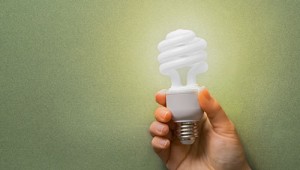 It’s been two months since the Environmental Protection Agency (EPA) released the Final Rule for the Clean Power Plan (CPP). Even if you haven’t read all 1560 pages yet, you probably know the gist of it by now. At its core, the CPP identifies three building blocks in setting the goal for each state: (1) lowered heat rates at coal-fired steam plants, (2) increased utilization of existing natural gas combined cycle plants, and (3) increased deployment of utility-scale non-emitting renewables. Most notably, energy efficiency (EE) is missing from that list, which is a change from the 2014 proposal. However, while the CPP building blocks set the emissions reduction goals for states starting in 2022, they don’t dictate how those goals will be achieved. That independence of goal-setting and compliance is key to the CPP’s flexibility.
It’s been two months since the Environmental Protection Agency (EPA) released the Final Rule for the Clean Power Plan (CPP). Even if you haven’t read all 1560 pages yet, you probably know the gist of it by now. At its core, the CPP identifies three building blocks in setting the goal for each state: (1) lowered heat rates at coal-fired steam plants, (2) increased utilization of existing natural gas combined cycle plants, and (3) increased deployment of utility-scale non-emitting renewables. Most notably, energy efficiency (EE) is missing from that list, which is a change from the 2014 proposal. However, while the CPP building blocks set the emissions reduction goals for states starting in 2022, they don’t dictate how those goals will be achieved. That independence of goal-setting and compliance is key to the CPP’s flexibility.
Even though energy efficiency was removed as the fourth building block, it remains an acceptable compliance mechanism for achieving the CPP goals and is in fact, the fastest, easiest and most cost-effective compliance mechanism to reduce greenhouse gases from power plants. EPA encourages EE by including it in the proposed federal plan if a state chooses not to develop its own plan, or if a state submits a proposal the EPA cannot approve within the required deadline. In addition, EPA encourages EE by proposing double-crediting for early action in low-income communities and allowing trading of energy efficiency credits or allowances. For example, the voluntary Clean Energy Incentive Program (CEIP) will provide bonus credits to EE projects newly implemented in low-income communities that are operational before the CPP emission standards go into effect in 2022. Renewables will also be eligible for bonuses under the CEIP, but they will be credited at half the rate accorded low-income EE investments.
Though it’s no longer one of the CPP building blocks, by implementing EE through their CPP plans, states can deliver financial benefits to consumers, cleantech companies, utilities, and citizens. However, if states are to maximize EE as the most cost-effective tool for compliance, all stakeholders will need to equitably share the costs and benefits. And that means aligning incentives so that the EE solutions get financed and deployed as efficiently as possible.
That’s an easy one……..Property Assessed Clean Energy Programs (PACE). In my opinion, this is the most economically efficient method (i.e. equitable) way to roll out energy efficiency under the CPP. … Read more »
You have good company promoting PACE … It was named one of the top 20 “world-changing” ideas by Scientific American. PACE is the best way to finance efficient buildings and… Read more »
As I teach in my GWU classes, it is always less expensive to save energy than to generate it from any energy source. So approaches to amortize the investment for… Read more »
I agree with the esteemed individuals above. PACE is a critical piece of the puzzle. The great thing about efficiency is that it is at the end of the line.… Read more »
Thank you, Kelly, for reiterating that energy efficiency is an allowable (and indeed very important) compliance tool. I recently heard a public utility commissioner state that the final rules had… Read more »
While energy efficiency (EE) has many benefits, it is not necessarily the best way to reduce carbon emissions. When EE is driven by technological advances rather than pricing signals (such… Read more »
Ah…..you are a Pigouvian tax kinda guy. I get it. Pigouvian taxes are appealing. Hence, the “tax and dividend” movement. Works okay in theory but not so well in practice. … Read more »
I agree with the first comments that PACE is important, but it always seems that motivating individuals (and businesses?) to take advantage of what should be a free-lunch (viewed in… Read more »
Bill/Robert: As this is not a thread on carbon pricing, I will just highlight why I think a Fee and Dividend (F&D) policy is better than a Cap and Trade… Read more »
I want to pick up on an important point that was made earlier in this conversation. PACE, along with other financing tools, is a critical component of energy efficiency deployment… Read more »
Meeting the requirements of the CPP using efficient building retrofits means finding the money and changing the rules. Buildings use 70% of our electricity, yet building retrofits have been given… Read more »